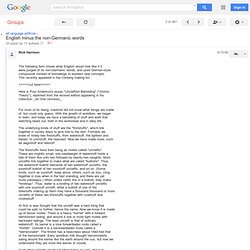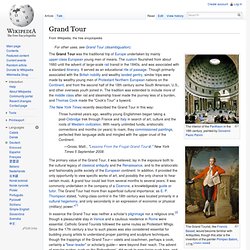

WATER. This Is Only Red. OMG SPACE. Gravity. My Solar System 2.03. v046 Hollow Flame looking inside a candle flame Naked Scientists Kitchen Science 2010. INSIDE a Spherical Mirror. What's The Most Dangerous Place on Earth? Eruption after person falls in lava lake of volcano (test with organic waste, garbage, trash) ENGLISH.
English minus the non-Germanic words. The following item shows what English would look like if itwere purged of its non-Germanic words, and used German-stylecompounds instead of borrowings to express new concepts.This recently appeared in the Conlang mailing list.

=====cut here===== Here is Poul Anderson's essay "Uncleftish Beholding" ("AtomicTheory"), reprinted from the revised edition appearing in his collection _All One Universe_. For most of its being, mankind did not know what things are madeof, but could only guess. With the growth of worldken, we beganto learn, and today we have a beholding of stuff and work thatwatching bears out, both in the workstead and in daily life. The underlying kinds of stuff are the *firststuffs*, which linktogether in sundry ways to give rise to the rest.
The firststuffs have their being as motes called *unclefts*.These are mightly small; one seedweight of waterstuff holds atale of them like unto two followed by twenty-two naughts. Most samesteads of every firststuff are unabiding. LONELY. What Is Consciousness? Why Do We Play Games? We Choose the Moon: Celebrating the 40th Anniversary of the Apollo 11 Lunar Landing.
Mars Gigapixel Panorama - Curiosity rover: Martian solar days 136-149. Iodine Clock (slow motion) - Periodic Table of Videos. How to break the speed of light. Stephen Fry pops balloons with a laser pen - QI - Series 10 Episode 13 - BBC Two. Feynman 'Fun to Imagine' 7: The Train. Holland vs the Netherlands. The Debt Limit Explained. Getty kouros. The Getty Kouros.

The Getty kouros is an over-life-sized statue in the form of a late archaic Greek kouros.[1] The dolomitic marble sculpture was bought by the J. Paul Getty Museum, Malibu, California, in 1985 for $9 million[2][3][4] and first exhibited there in October 1986. Despite initial favourable scientific analysis of the patina and aging of the marble, the question of its authenticity has persisted from the beginning. Subsequent demonstration of an artificial means of creating the de-dolomitization observed on the stone has prompted a number of art historians to revise their opinions of the work.
If genuine, it is one of only twelve extant complete kouroi. Provenance[edit] The kouros first appeared on the art market in 1983 when the Basel dealer Gianfranco Becchina offered the work to the Getty's curator of antiquities, Jiri Frel. Stylistic analysis[edit] The Getty kouros is highly eclectic in style. Technical analysis[edit] Side view of the kouros. Frontal view. In 1990, Dr. Grand Tour. The New York Times recently described the Grand Tour in this way: The primary value of the Grand Tour, it was believed, lay in the exposure both to the cultural legacy of classical antiquity and the Renaissance, and to the aristocratic and fashionably polite society of the European continent.

In addition, it provided the only opportunity to view specific works of art, and possibly the only chance to hear certain music. A grand tour could last from several months to several years. It was commonly undertaken in the company of a Cicerone, a knowledgeable guide or tutor. The Grand Tour had more than superficial cultural importance; as E. History[edit] The idea of traveling for the sake of curiosity and learning was a developing idea in the 17th century. The typical 18th-century sentiment was that of the studious observer traveling through foreign lands reporting his findings on human nature for those unfortunate enough to have stayed home.